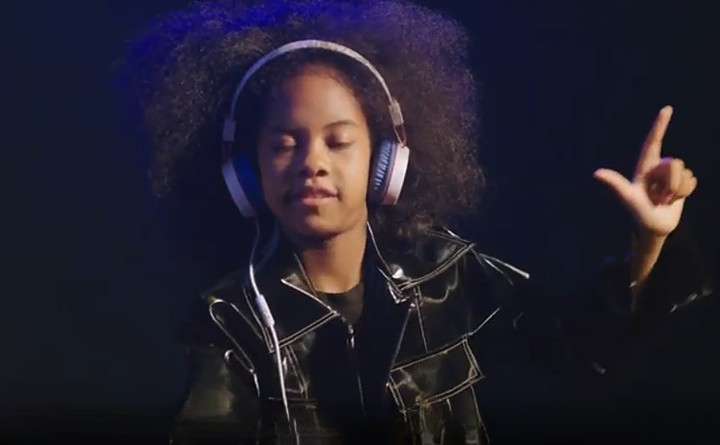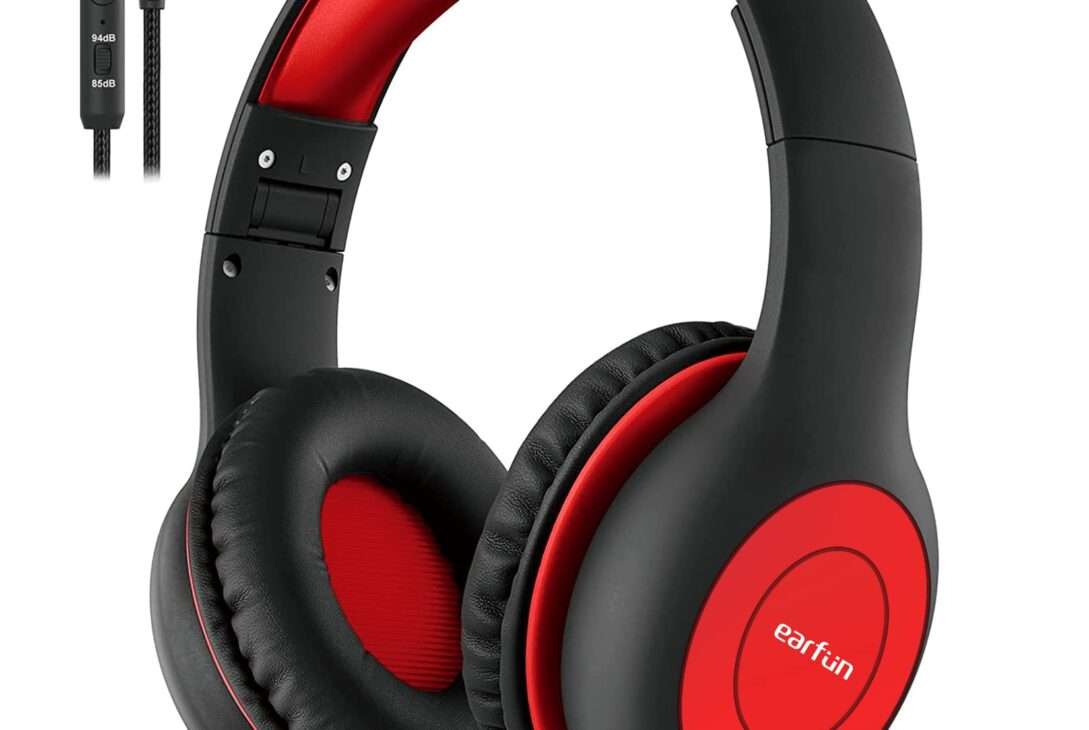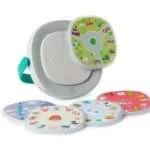Headphones for Kids With Volume Limit are crucial for safeguarding children’s hearing health while allowing them to enjoy their favorite audio content safely.
These specially designed headphones restrict the maximum volume output, reducing the risk of hearing damage from prolonged exposure to loud sounds. Ensuring your child enjoys music and learning with audio safely is paramount, and volume-limiting headphones are the answer.
They are designed to keep the sound at safe levels, typically not exceeding 85 decibels, which is the recommended noise-level limit for children by health experts. Such headphones safeguard your child’s hearing and offer peace of mind for parents.
They’re an essential accessory for tech-savvy youngsters, combining protection with fun. With a range of child-friendly designs and durable builds, these headphones can withstand the rough and tumble of kids’ use while delivering clear sound quality.
Selecting the appropriate pair allows you to nurture your child’s passion for audio while safeguarding their auditory well-being.

The Need For Headphones for Kids With Volume Limit
Young children need headphones that can keep their delicate ears safe. Loud sounds can hurt their hearing. That is why volume-limited headphones are great for kids. These headphones do not let sounds get too loud.
Safe volume standards are necessary for protecting young ears. Experts say the maximum volume should be 85 decibels. This level is safe for children, even if they listen for a long time. Parents should choose headphones that stick to these rules.

Credit: www.amazon.com
How Loud Is Too Loud?
Understanding decibel levels is key to protecting kids’ ears. Sounds are measured in units called decibels (dB). A whisper is about 30 dB, normal talk is about 60 dB, and a motorcycle is 95 dB.
The louder the sound, the less time it takes to harm hearing. Listening to any sound at 85 dB for more than 8 hours can be risky. At 100 dB, damage can occur in just 15 minutes.
Therefore, it’s vital to choose headphones for kids that limit volume. Good kids’ headphones limit volume to 85 dB or less. This helps their ears stay safe, even if they listen to music for a long time.
Features Of Kid-friendly Headphones
1. Volume Limiting Capabilities
The primary feature to look for in headphones for kids is, of course, the volume-limiting functionality. Ensure that the headphones adhere to recommended safety standards for maximum volume output, typically set at 85 decibels.
2. Comfort and Durability
Children can be rough with their belongings, so opt for headphones crafted from sturdy materials that can withstand everyday wear and tear. Additionally, prioritize comfort with padded ear cups and an adjustable headband to ensure a snug yet comfortable fit for extended use.
3. Noise Isolation
Look for headphones that offer adequate noise isolation to block out external distractions, allowing children to immerse themselves fully in their audio experience without having to increase the volume to compensate for ambient noise.
4. Size and Design
Select headphones tailored for children, offering a lightweight, compact design that accommodates smaller head sizes and ear shapes for a comfortable, secure fit. Vibrant colors and fun designs can also add an element of excitement for young users.
5. Wired vs. Wireless
Consider whether you prefer wired or wireless headphones for your child. While wireless options offer greater freedom of movement, wired headphones eliminate the need for battery charging and ensure uninterrupted listening sessions.
Best Practices For Using Volume-limited Headphones
Volume-limited headphones are crucial for protecting children’s ears. Parents should always monitor their children’s usage time and sound levels. It’s essential to teach kids the importance of lower volume settings to safeguard their hearing.
Encourage breaks to rest their ears after listening. Regularly check the headphones to ensure they function correctly and maintain the volume limit. Sharing fun facts about hearing can make learning enjoyable for kids. Remember, ear health is a part of overall well-being.
A table of safe listening levels can be helpful:
| Activity | Maximum Volume | Recommended Time |
|---|---|---|
| Music | 85dB | 2 hours |
| Games | 85dB | 1 hour |
| Stories | 70dB | 4 hours |
Expert Recommendations
Experts agree that headphones made for kids should have volume limits. Pediatric audiologists emphasize the importance of preventing hearing damage. They endorse headphones with built-in volume control to protect young ears.
Safe listening levels are often set at 85 decibels. This limit helps prevent noise-induced hearing loss. Trusted organizations like the World Health Organization (WHO) support these safety standards.
Before buying headphones for a child, look for products with these features. Choose those that experts and medical professionals recommend. Safety and health should always be a top priority.
Popular Volume-limited Headphones In The Market
Parents often seek safe headphones for their children. Volume-limited headphones help protect young ears. Below is a comparison of popular choices, informed by user feedback.
| Headphone Model | Age Range | Volume Cap | User Rating |
|---|---|---|---|
| LilGadgets Connect+ | 3-7 years | 93dB | 4.3 stars |
| Snug Play+ | 2-8 years | 85dB | 4.5 stars |
| JLab JBuddies Studio | 6+ years | 85dB | 4.6 stars |
| Puro Sound Labs BT2200 | 2-11 years | 85dB | 4.4 stars |
Each model offers unique features for kids. Parents love the comfortable fit and sound quality. Kids enjoy the fun colors and designs. Remember, safety always comes first!
Tips for Ensuring Safe Listening Habits
While volume-limiting headphones offer crucial protection for children’s hearing, it’s vital to instill safe listening habits to reduce the potential for hearing damage. Here are some tips to promote responsible headphone use:
1. Set Time Limits
Encourage children to take regular breaks from headphone use to give their ears a rest and prevent overexposure to loud sounds.
2. Monitor Volume Levels
Encourage children to listen at a safe volume and use the volume-limiting feature on their headphones to protect their hearing.
3. Supervise Usage
Keep an eye on your kids’ headphone use to ensure they’re following safety precautions and utilizing them appropriately.
4. Lead by Example
Set a positive example by using volume-limiting headphones and demonstrating healthy listening habits to your children.
Customizing Listening Experience
Safe listening is a top priority for parents. Headphones for kids often have volume limits. Some headphones let parents set the volume control. This helps to protect little ears from loud sounds.
Kid-friendly headphones can have adjustable volume limits. They may come with an app for parental control. Parents can check and change the volume. They make sure the sound stays at a safe level.
It’s important to choose headphones that are easy to use. Kids can enjoy music and games without risk to their hearing. Look for headphones that are durable and comfortable too. Cushioned ear pads and adjustable headbands are good for little heads.
Beyond The Ears: Additional Safety Features
Choosing the right headphones for your child involves considering safety. Kids’ wireless headphones reduce the risk of choking. This is especially important for very young children who may get tangled in wires.
Hypoallergenic options exist for those concerned about materials. They prevent allergic reactions from materials typically used in headphone production.
| Headphone Type | Safety Feature | Best For |
|---|---|---|
| Wireless | No cords, less choking hazard | Kids under 4 years |
| Wired | Durable, with cord management | Older children who can handle cords |
Always check the product details for non-toxic materials. Many brands mention if they are free from common allergens. This is important to keep your child safe from skin irritations.
The Future Of Child-safe Audio Technology
Child-safe audio technology is advancing quickly. New headphones are designed to protect young ears. They have a volume limit feature. This helps prevent hearing damage.
These headphones often include parental controls. Parents can adjust the volume settings. Legislation is stepping in to help, too. Laws may soon require these safety features. This is good for children all over the world. The health of their ears is important.
Manufacturers are listening. They create safer audio devices for kids. Parents and lawmakers work together. They ensure kids enjoy music safely.

Frequently Asked Questions On Headphones For Kids With Volume Limit
Why Are Volume-limiting Headphones Safer For Kids?
Volume-limiting headphones cap the maximum sound level to protect young ears from potential damage caused by high volumes, typically not exceeding 85 decibels.
What Age Are Volume-limit Headphones For?
Volume-limit headphones are ideal for toddlers to teens, ensuring a safer listening experience during their developmental years.
How Do Volume-limiting Headphones Work?
Volume-limiting headphones use built-in circuitry to maintain sound at safe levels, preventing accidental exposure to potentially harmful loud noises.
Can Kids Outgrow Volume-limiting Headphones?
Kids can outgrow the size but not the need for volume-limiting features; hearing protection is crucial at all ages, especially in noisy environments.
Conclusion
Choosing the right volume-limiting headphones for your child can make all the difference. It’s about finding a balance between safety and sound quality. Parents can rest easy knowing they’ve provided secure, enjoyable listening experiences.
Prioritize your kids’ hearing health today – pick headphones that keep the volume in check!

A passionate tech blogger and the founder of Best Tech View, a dynamic platform dedicated to all things technology. With a keen interest in the tech, Ahmad strives to provide insightful and engaging content on the latest tech trends, and breakthroughs.



